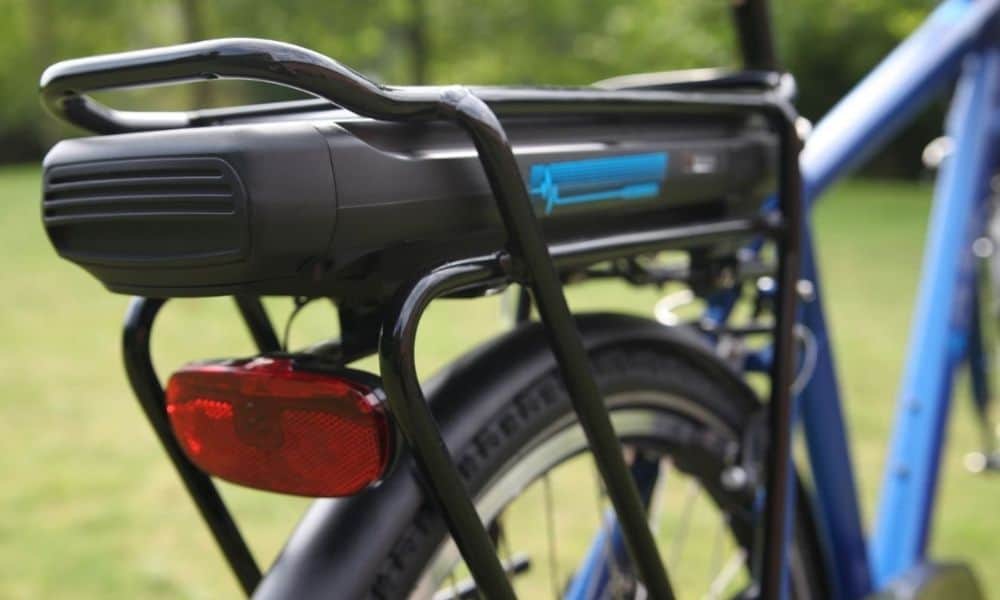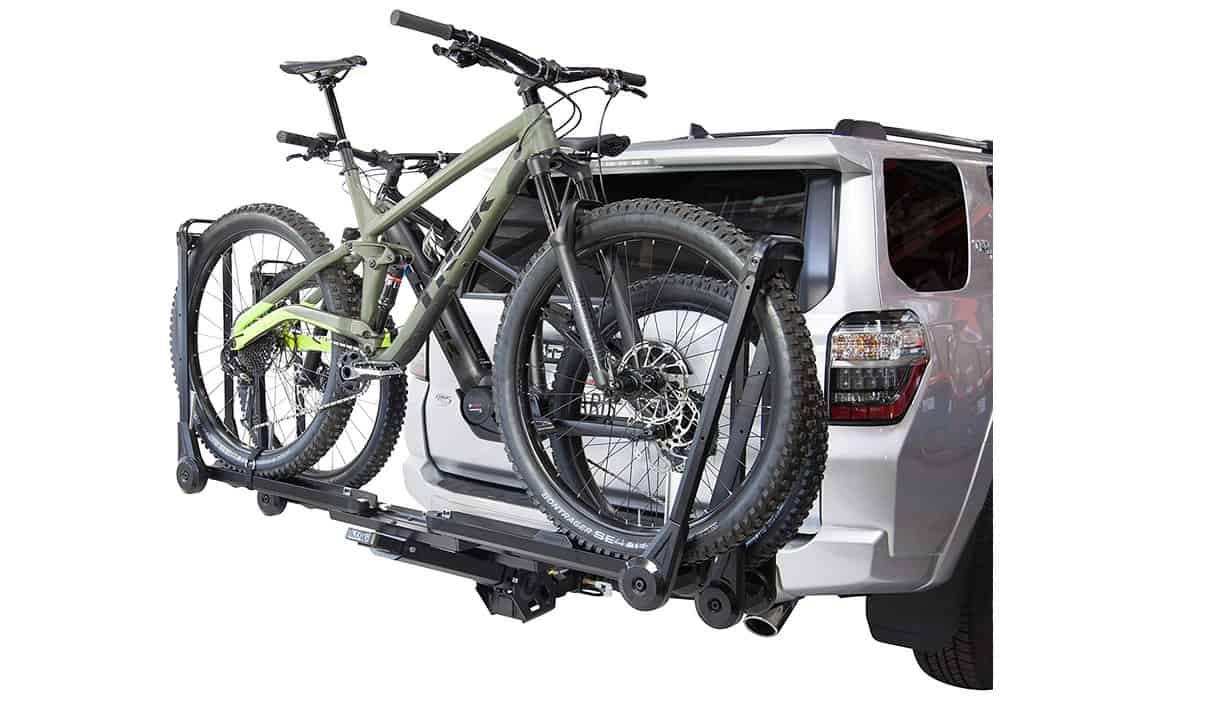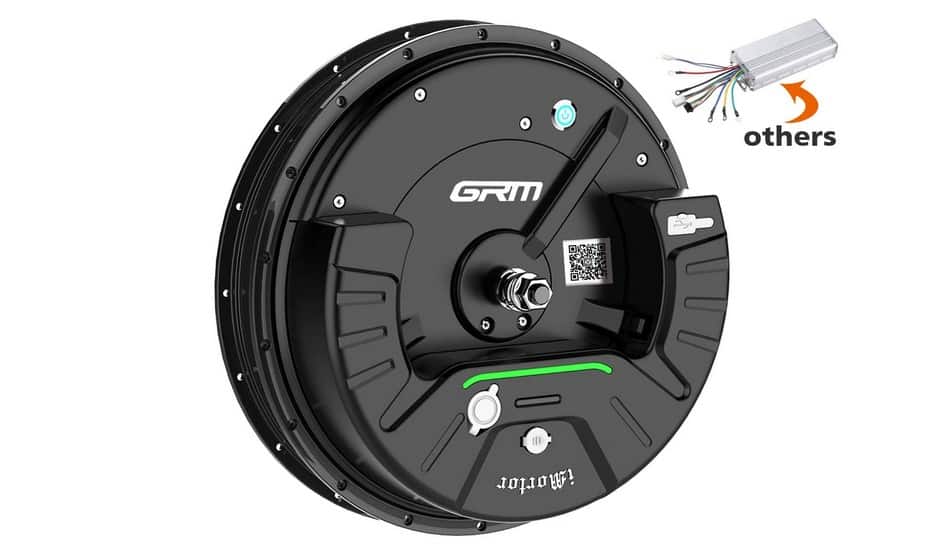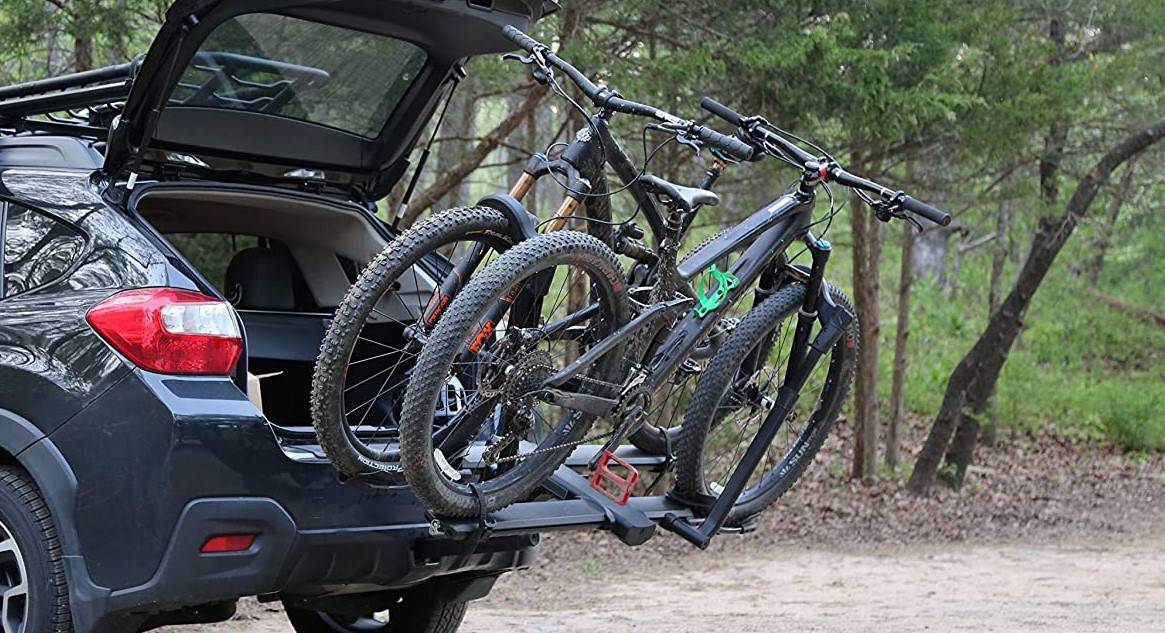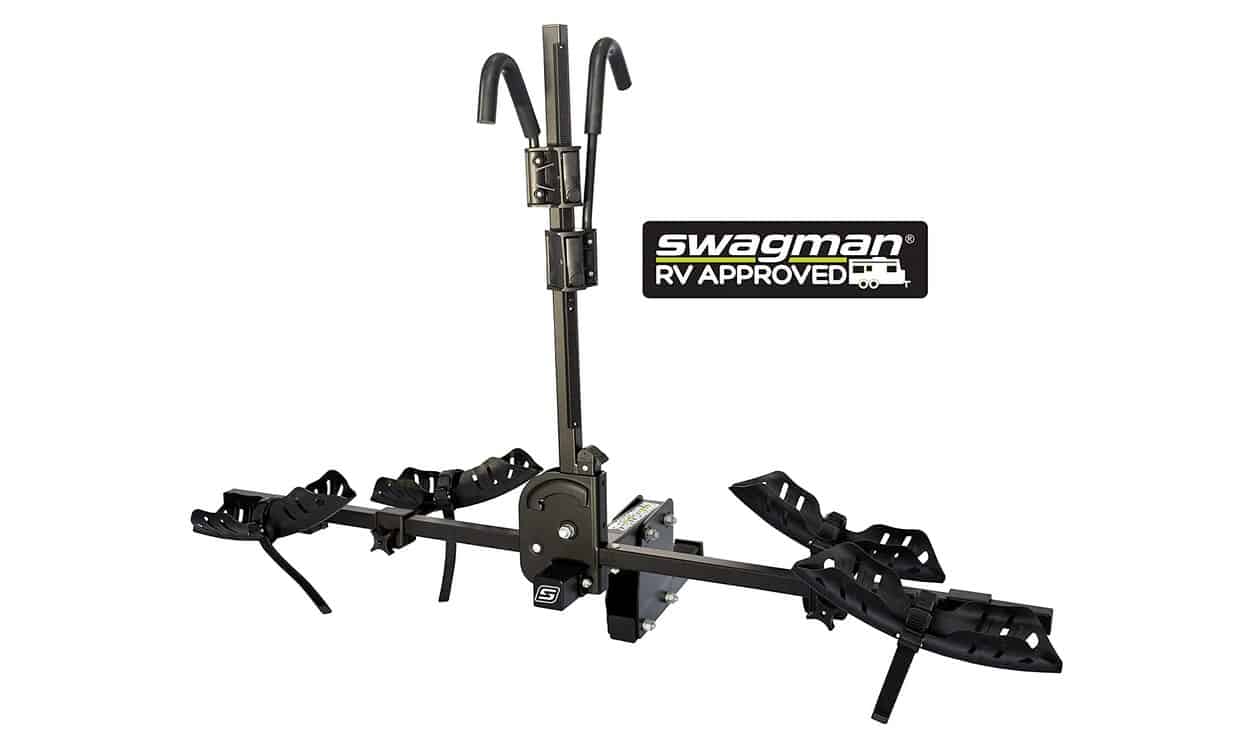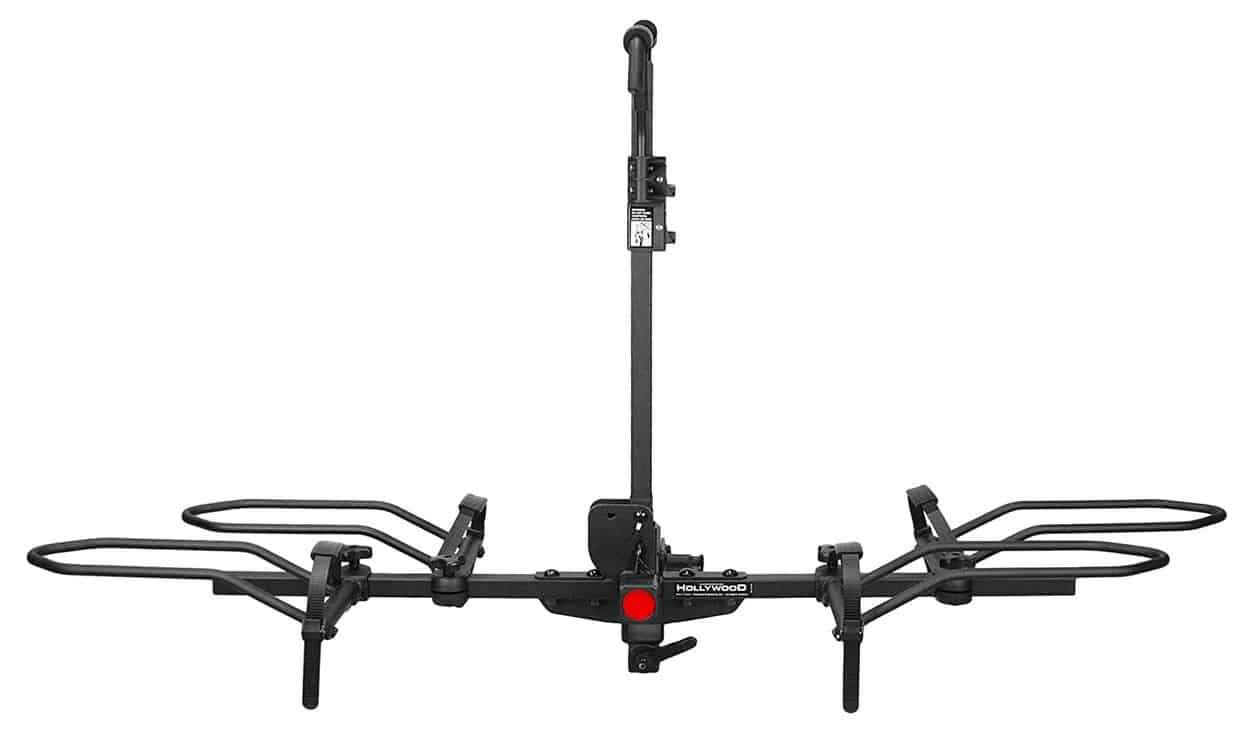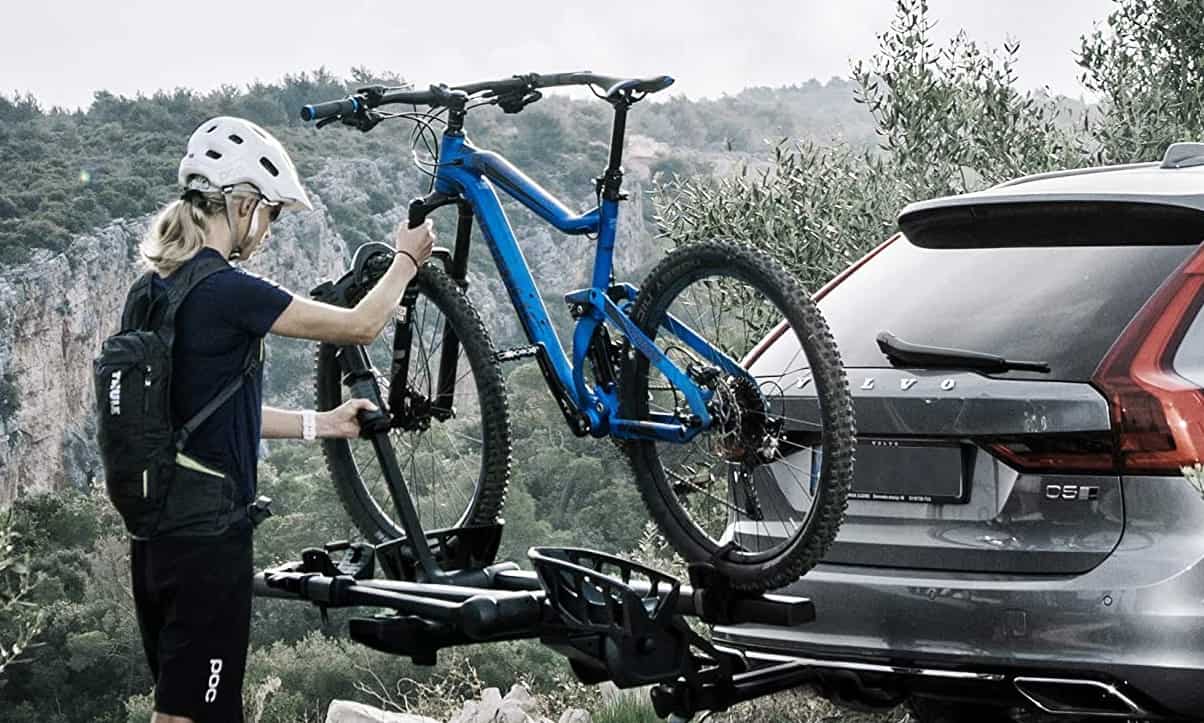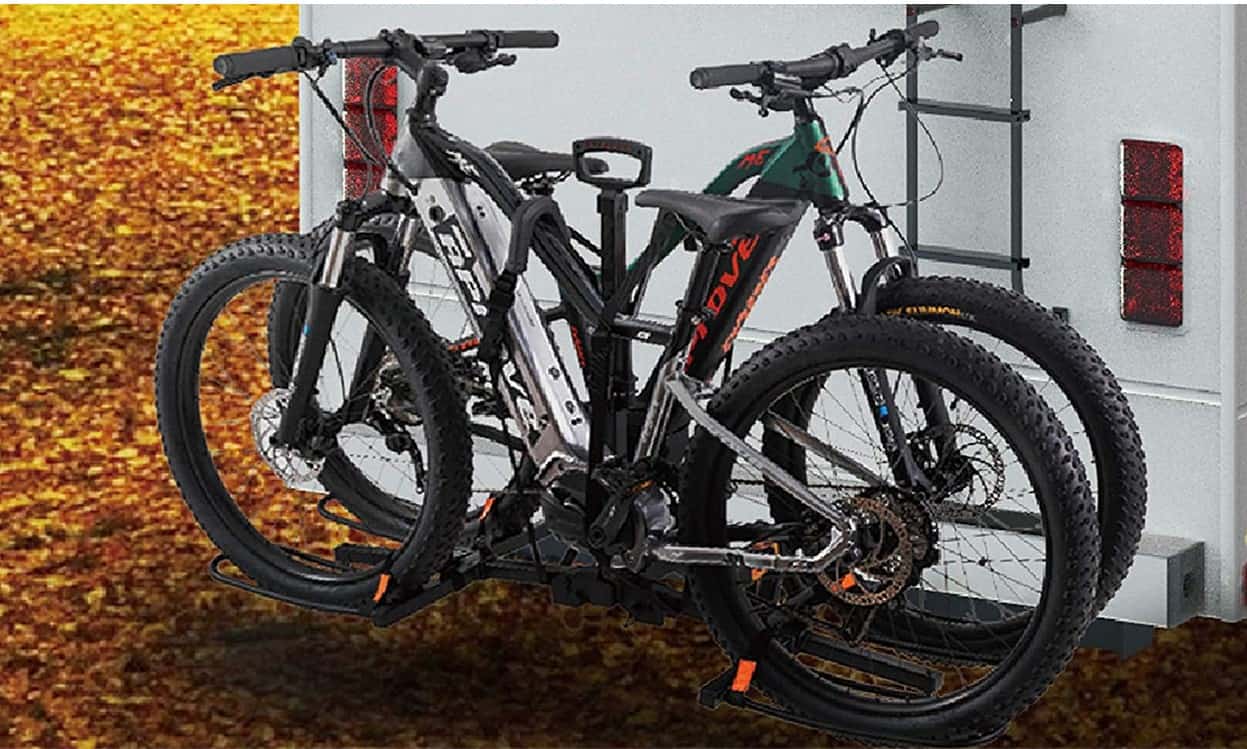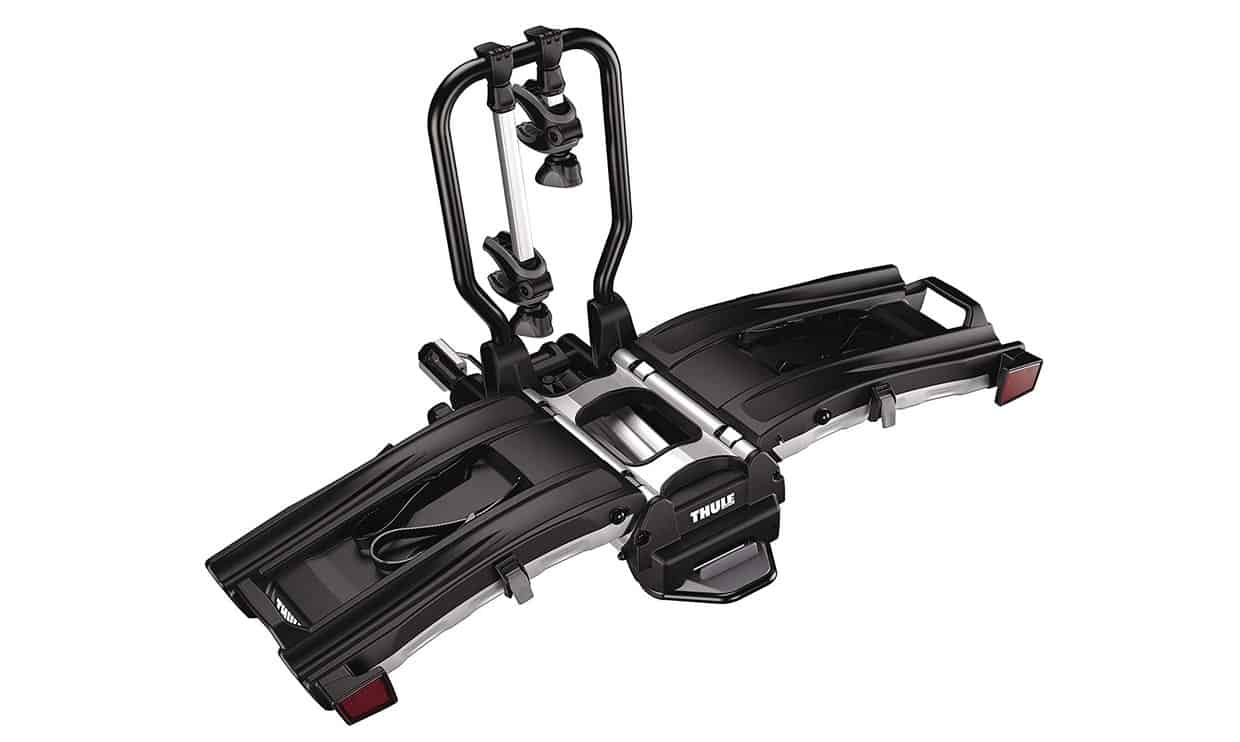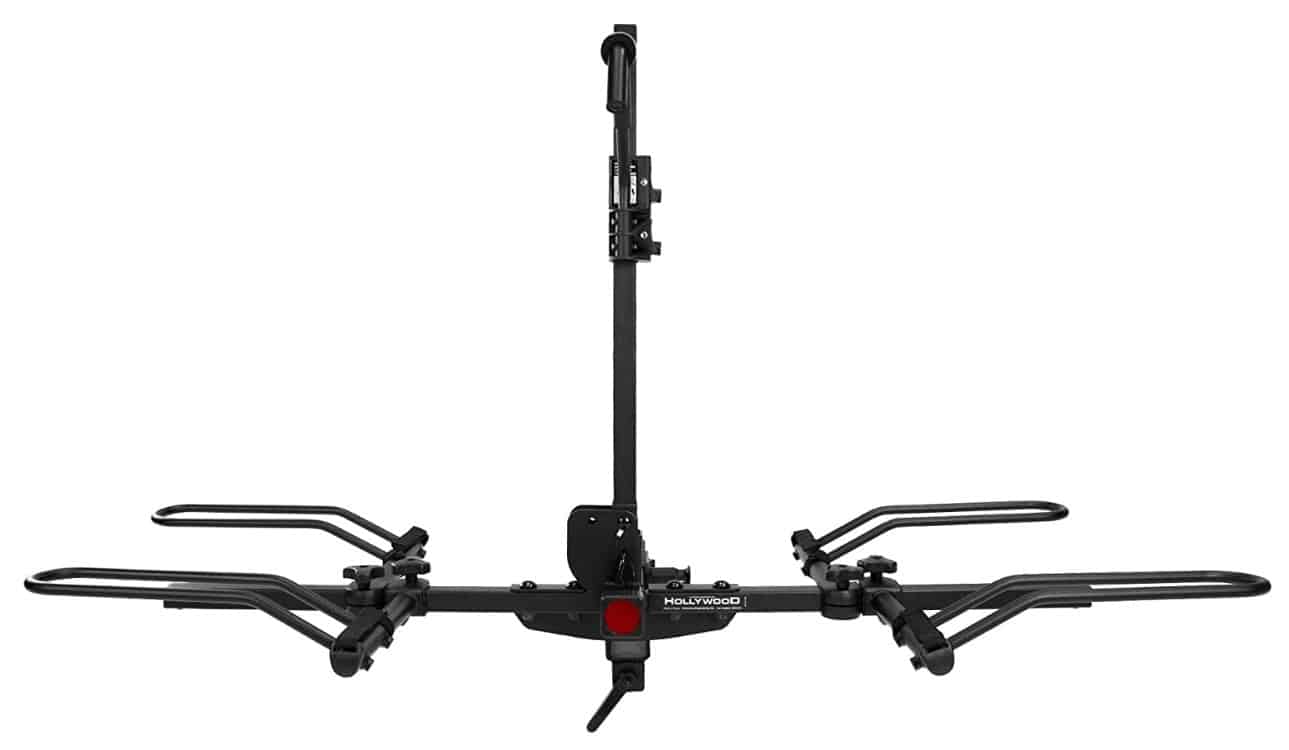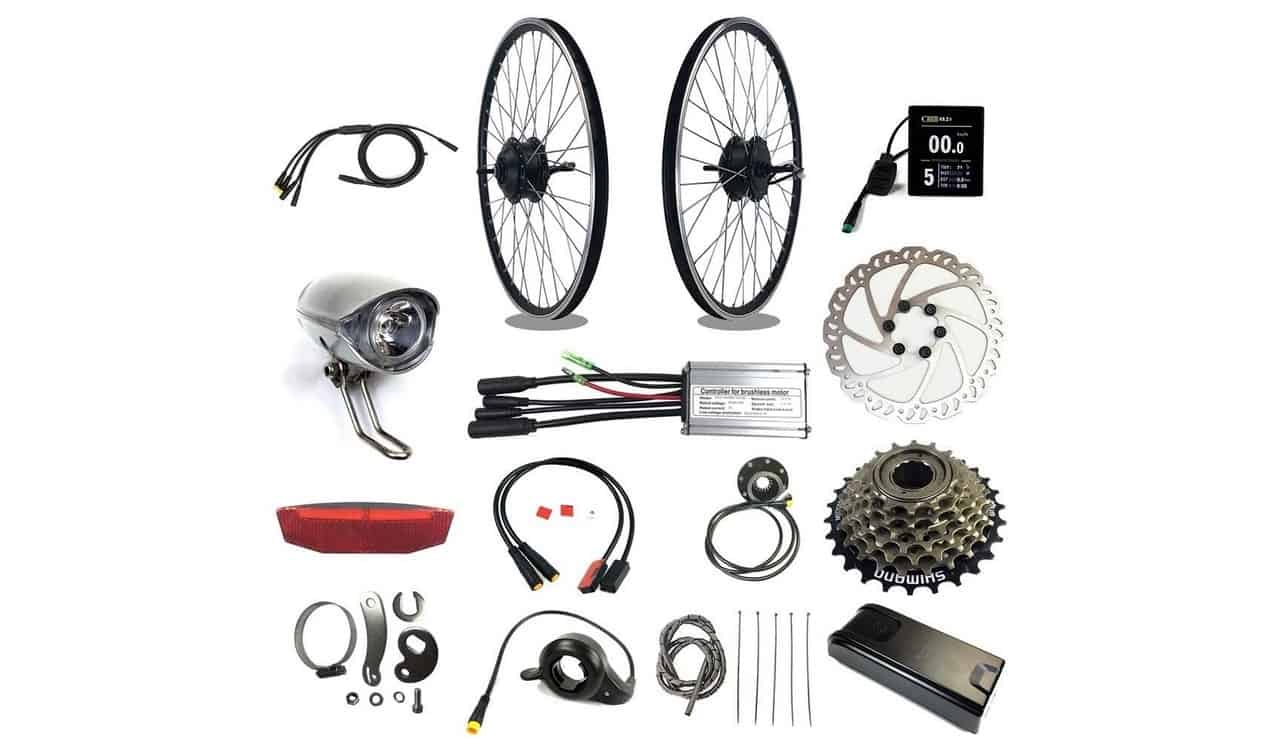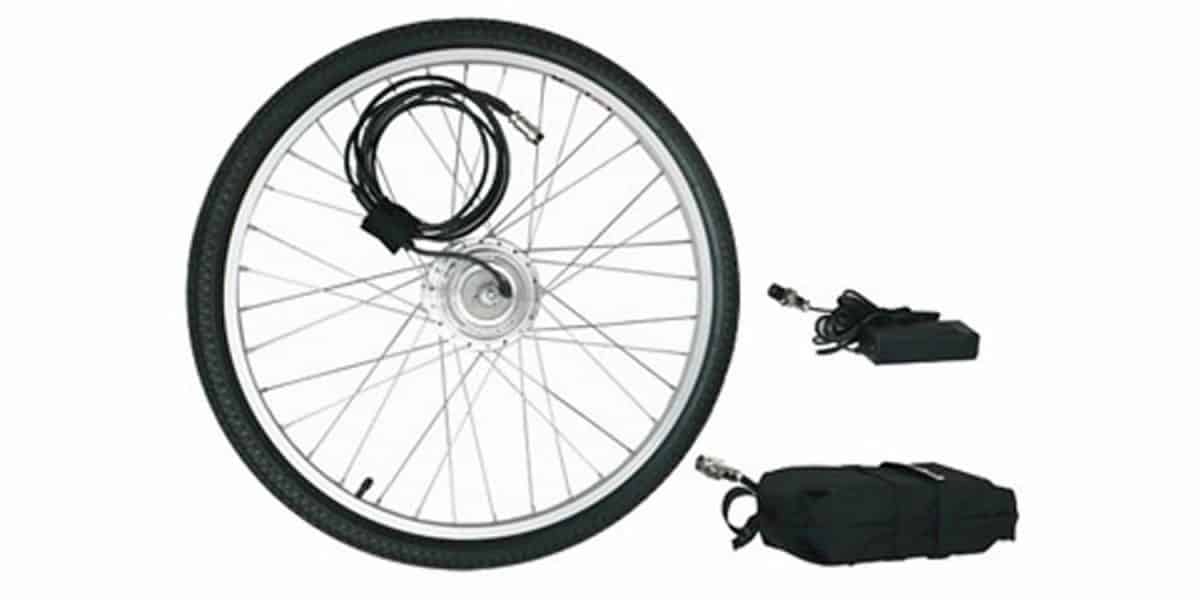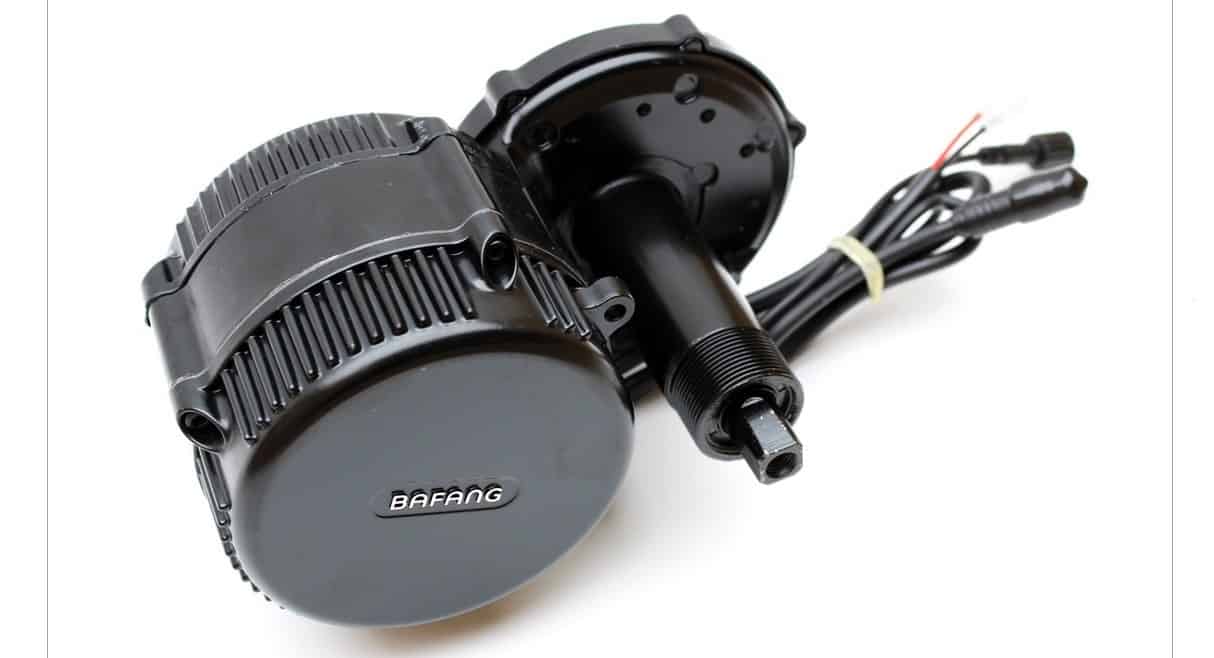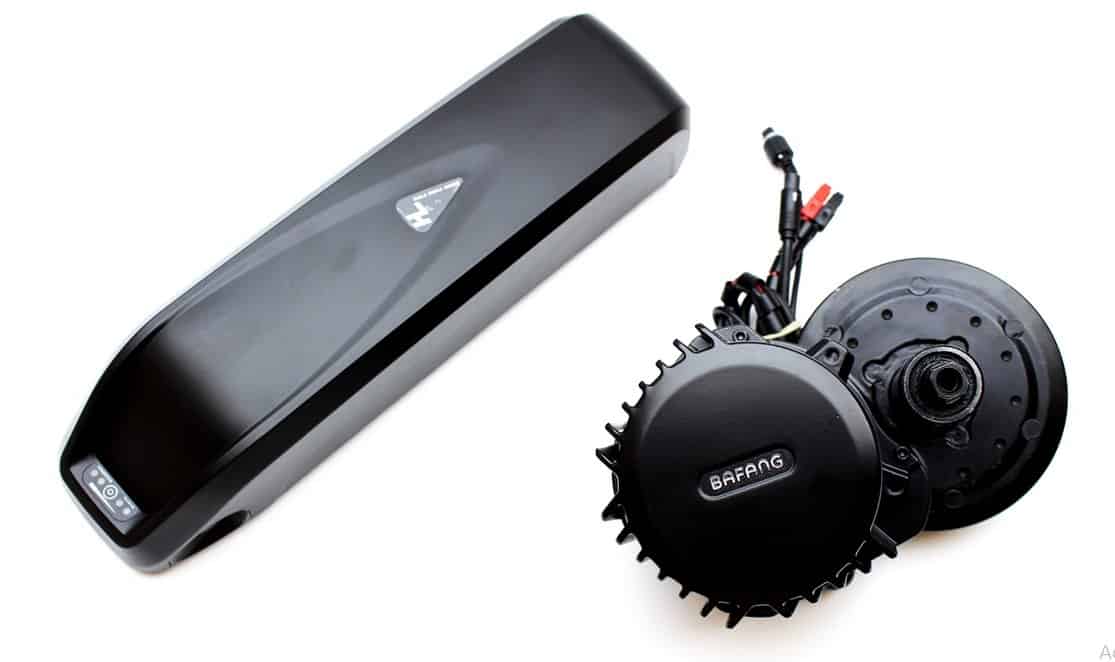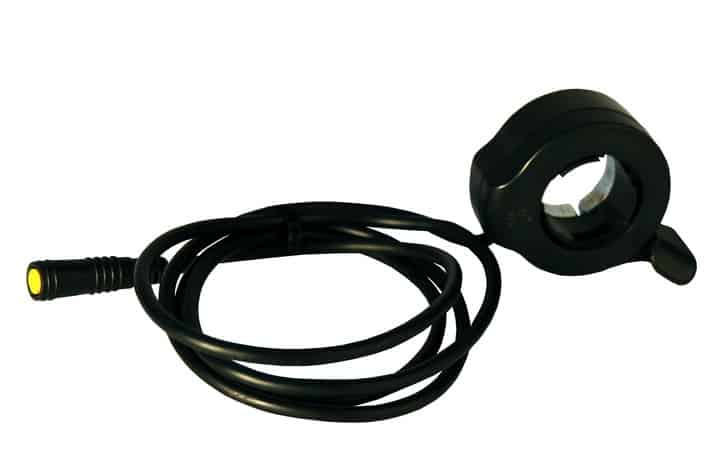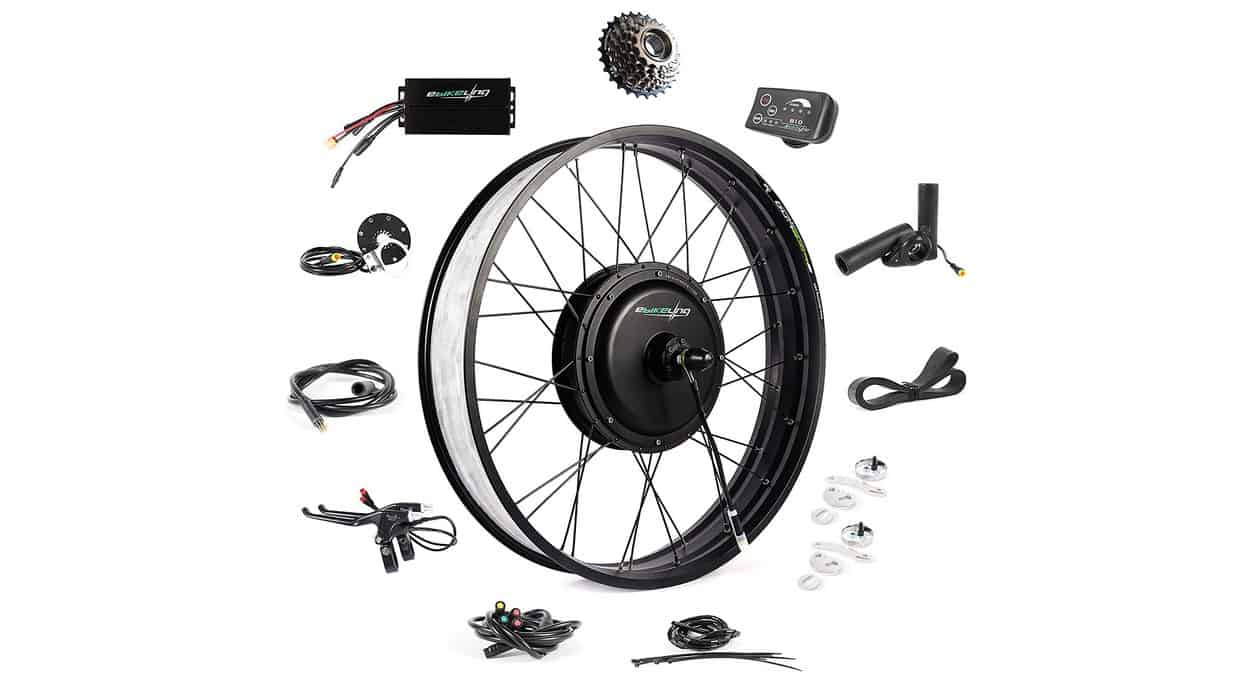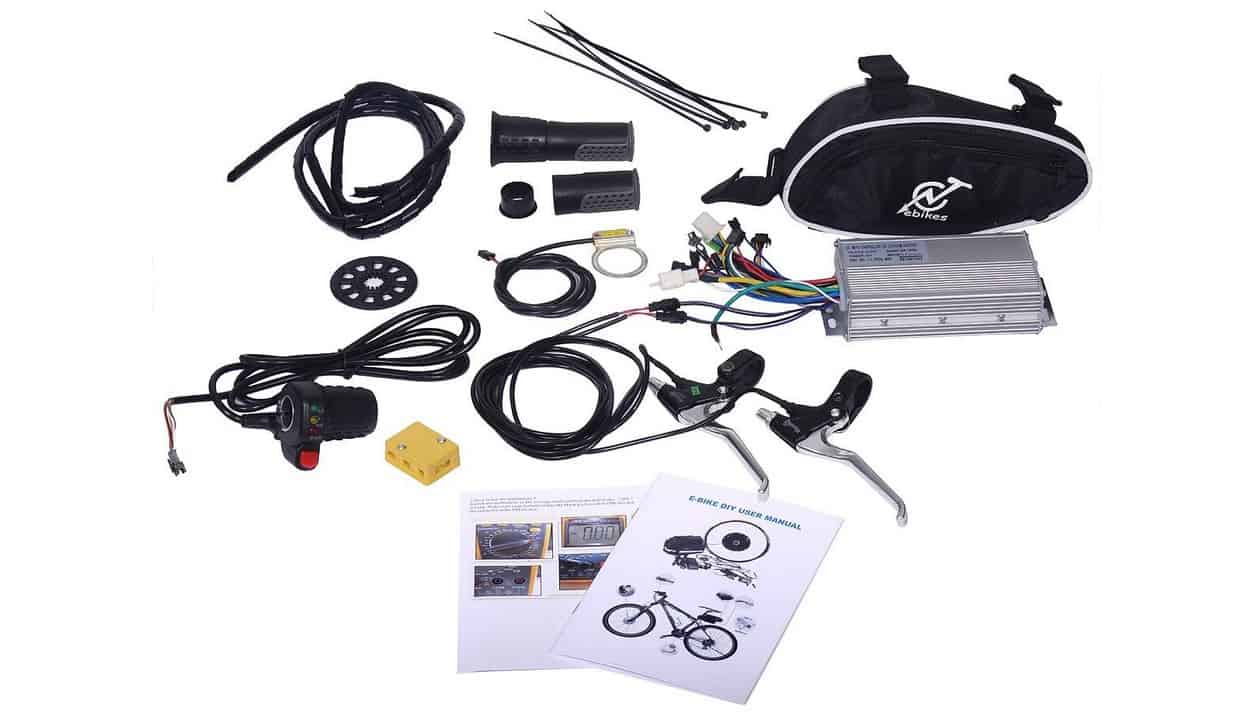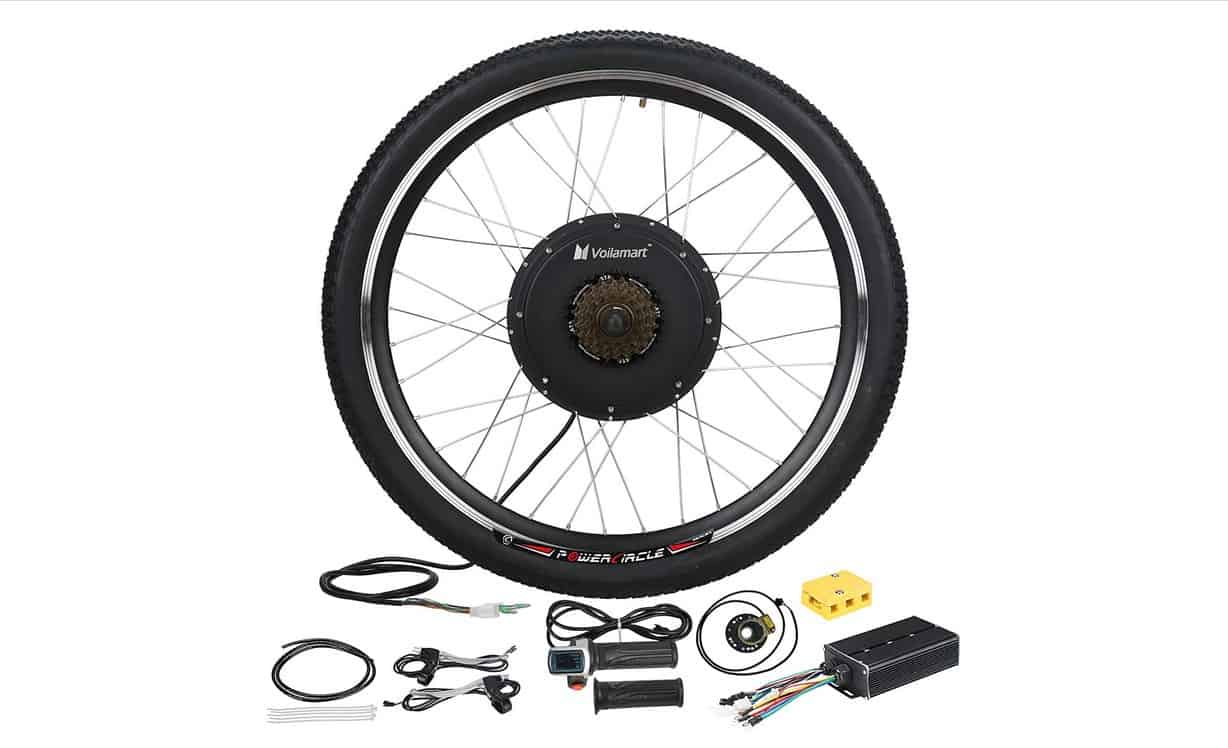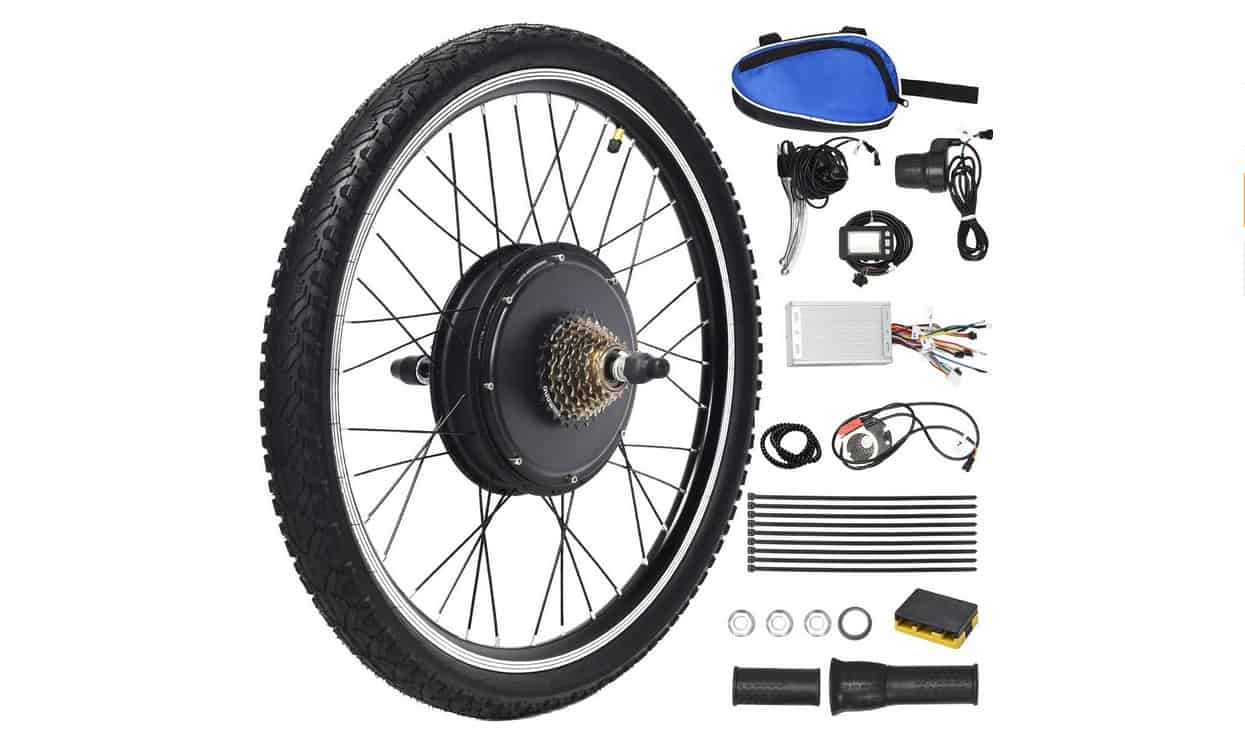What are the features that make the best battery for an electric bike? It starts with energy density, the amount of energy storage compared to the weight and size of the battery. Ebike battery capacity is often stated in terms of Amp-hours, a measure of electric current output over time. To allow a reasonable range, an e-bike battery needs at least about 10 Amp-hours. E-bike batteries also have to deliver sufficient voltage to run the motor at the proper speed, and they must be able to offer enough peak power for initial acceleration and going up hills.
We’re sorry, this product is temporarily out of stock
They also have to be able to recharge in a reasonable amount of time. This means that thermal safety is the next most important factor to consider in choosing an e-bike battery. This depends both on the architecture of the battery pack itself and on the design of the battery management system. It’s especially important for lithium-ion battery packs to have excellent safety features, since Li-ion batteries can overheat, causing a potentially dangerous situation. Finally, a good electric bicycle battery should be able to charge quickly and remain usable over a reasonable number of charge cycles. Keep reading our electric bike battery buying guide to learn more. And for the best e-bike with high-end features, have a look at our list of the best electric bikes on the market today.
Top Batteries for Electric Bikes
#1 Unit Pack Power Electric Bike Battery
We’re sorry, this product is temporarily out of stock
Award: TOP PICK
WHY WE LIKE IT: This battery has a standard design wlfh a high-quality plate that installs easily on a wide variety of bicycles. It comes with a key and lock to keep thieves away.
- Incredibly durable
- Key and lock
- USB charging port
- The 36V model has a mediocre battery life
The Unit Pack Power (UPP) electric bike battery is a versatile battery that can be installed on a wide selection of bikes. It has several variants, including 36V 13Ah, 48V 15Ah, and 52V 20Ah models, so it fits a selection of motors. It comes with a base that will fit easily on most bike frames. However, the battery life of the 36V variant is not suitable for people who go for cross-country journeys.
This Unit Pack Power electric bike battery has a lifetime that goes beyond 800 charging cycles, providing durability. The battery consists of high-quality lithium-ion cells that hold the charge. The pack also includes an LED indicator for monitoring battery life easily. This battery comes with all the necessary hardware for mounting on a bicycle. This ebike battery comes with a lock and key for secure mounting. Featuring a USB charging port, the battery also powers smartphones and other devices.
#2 Engwe Electric Bike Battery
We’re sorry, this product is temporarily out of stock
Award: HONORABLE MENTION
WHY WE LIKE IT: This Engwe battery features high-quality Samsung cells that provide effective performance and durability. The device also has a key and lock that provide security.
- Fantastic battery life
- Included key and lock
- Comes with a four-pin mounting plate
- 36V model has limited capacity
The Engwe electric bike battery consists of lithium-ion cells that provide adequate power for running modern ebikes. This battery is compatible with a wide selection of motors, ranging in power from 200W- through 800W. It has standard dimensions that fit on a wide variety of frames, simplifying installation. Featuring Samsung cells, this power pack offers efficient performance and durability. The device has an Anderson cable connector for easy installation. However, some variants have limited battery life.
With a smart management system, BMS, this Engwe electric bike battery accurately monitors the expected battery life. This system also prevents short circuits, overcharging, overcurrent and other safety issues. It has a USB port for powering mobile phones, and an included mounting plate simplifies installation on the bike. It’s available in two varians: A 48V 13Ah variant and 48V 15Ah variant. It has a lock and comes with two keys to help prevent theft. Featuring a battery level indicator, this device allows easy monitoring.
#3 xQZF Electric Bike Battery
We’re sorry, this product is temporarily out of stock
Award: BEST FOR CROSS-COUNTRY RIDERS
WHY WE LIKE IT: This battery features quality lithium-ion cells that support fast charging. It supports a wide variety of motors and a huge selection of bikes as well.
- Incredible battery life
- USB charging port
- Battery life indicator
- Requires a conversion kit to work with some bikes
The QZF electric bike battery features a wide variety of variants, including 48V 13Ah, 36V 13Ah, and 52V 13Ah models. This ebike battery is suitable with bikes with motors ranging from 250W to 1000W. It provides a battery life of up to 85 miles, depending on the riding speed and driving characteristics. A BMS management system prevents overcharging and other electrical issues. However, this battery may require a mounting kit to install on some bike frames.
This QZF electric bike battery has an LED indicator to help users monitor battery life. This QZF battery is lightweight, so it is unlikely to substantially increase the weight of the bike. It has a lifetime of over 1000 cycles and an expected lifetime of over 5 years. It also resists overheating, so it’s quite efficient. With a modern base, this device securely attaches to a variety of bikes. This battery features a USB port for charging.
#4 Yose Electric Bike Battery
Award: BEST DURABLE
WHY WE LIKE IT: This Yose battery has an impressive lifecycle, which will suit people seeking a lasting solution. The device comes with convenient features such as a charging connector and battery life LCD.
- Outstanding life cycle
- Safety lock
- USB port
- Battery indicator is sometimes faulty
The Yose electric bike battery is recommended for bikes with motors ranging in power from 100W to 1000W. This battery is available in models of 13Ah 38V and 13Ah 48V. It has a universal base that attaches to an extensive selection of bike frames. With a smart BMS, this battery offers protection against short circuits, overcharging, and overvoltage. However, the battery level indicator on this model is sometimes misleading.
This Yose electric bike battery has a safety lock to ward off intruders. An LED indicator on this unit enables monitoring battery status easily. A power control switch helps to save energy. This Yose battery has a black color scheme, blending in easily with bike frames. The battery has an upgraded connector with water-resistant qualities and efficient connectivity. It maintains up to 75% capacity after the first 1000 charge cycles, so it’s built to last.
#5 X-go Electric Bike Battery
We’re sorry, this product is temporarily out of stock
Award: BEST FOR LEISURE RIDERS
WHY WE LIKE IT: This battery has a stylish design that will add visual interest to any electric ride. It comes with a high-quality plate that provides near-universal compatibility with various two-wheelers.
- Gorgeous design
- Comes with a key and lock
- Battery life LED
- Mounting hardware is inadequate for some bikes
The X-go electric bike battery features high-quality lithium-ion cells that provide plenty of power. This battery is recommended for bikes with motors of 50W to 750W. It has variants of 36V, 48V, and 52V, so it is suitable for a wide variety of motors. A four-pin connector plate simplifies installation on the bike. With a charging time of 3 to 5 hours, this battery provides ease of use. However, the included hardware is inadequate for mounting on some bikes.
This X-go electric bike battery has a safety lock and two keys for security. It has an LED battery-level indicator that simplifies monitoring. The included base simplifies installation on the frame. This battery has a BMS system that staves off over-current, short circuits, overcharging and other safety drawbacks. It exceeds 1000 cycles and retains about 80% of its capacity after 1000 cycles. The battery is CE and MSDS certified for safety and efficiency. It’s versatile and works with large-tire, city commuter, and snow beach mountain bikes.
#6 Joyisi Electric Bike Battery
Award: BEST FOR COMMUTERS
WHY WE LIKE IT: Powerful security features that include a key and lock and 30A BMS protect the battery against both physical and electric safety issues. It comes with a mounting plate with modern connectors, so it works with newer models bikes.
- Top grade battery cells
- LED battery monitoring indicator
- Key and lock
- Finicky base
The Joyisi electric bike battery works with 200-1000W motors. This device has a universal plate that fits motors from brands such as Bafang and Voilamart. It’s available in 36V, 48V, and 52V variants. The battery is lightweight, so it’s easy to install. An LED indicator lets users keep tabs on the battery life in real time. However, the base of this battery is a bit weak and might not be suitable for people who regularly ride on rough trails.
This Joyisi electric bike battery has a charging time of about 8 hours. It’s Anderson connectors make it easy to install on modern motors. With a 30A BMS system, this device is unlikely to suffer from overcharging, over-discharge, and short circuits. This battery has a lock and two keys for safety. It also has a mounting plate that attaches to a variety of bikes. An included USB port charges smartphones and other mobile devices.
Beginners’ Guide to Batteries for Electric Bikes
What Are Batteries for Electric Bikes?
A battery for an electric bike is a type of battery used to deliver electricity to the electric motor powering an e-Bike. Electric bike batteries form the centerpiece of an e-Bike conversion and are among the most important components of any electric bicycle.
A few different types of batteries have been used in electric bicycle applications, with different battery chemistries including nickel-metal hydride batteries, lead-acid batteries, nickel-cadmium batteries, and various types of lithium batteries.
Most eBike battery kits sold today use lithium-ion batteries, typically with a number of 18650 battery cells arranged in parallel and in series to give 36, 48, or 52 volts. Some specialized eBikes such as an electric mountain bike may mount even larger batteries.
Electric Bike Batteries vs Other eBike Parts
Among the parts needed on an electric bike, the eBike battery has a very large impact on the quality of the resulting riding experience. The battery life determines how far you can ride on a single charge, and the power density of the battery determines how much electric motor assistance you can rely on.
In addition, electric bicycle maintenance schedules depend on the battery’s longevity in terms of how many charge cycles it can endure. The best lithium batteries for eBikes can go as much as 1000-1200 charge cycles before they start to degrade too much.
The removable battery is also usually the heaviest part of an electric bicycle conversion kit. There can be a big difference in the weight of different battery types, with lead-acid batteries weighing the most, and lithium-ion battery packs being the lightest. Especially for an e-bike battery mounted up high on the rear rack, this considerable weight can change how the bike handles.
How Electric Bike Batteries Work
Electric bike batteries store electricity in a charged chemical solution. IN general, batteries use a negative electrode called an anode, and a positive terminal called a cathode. Ions move from the anode toward the cathode during discharge, and back again while charging.
Lithium-ion batteries use lithium ions to carry an electric charge. They may use various different materials for the anode and cathode. Some of the most common choices for the anode material are cobalt and iron-phosphate. However, new technologies are in development to replace lithium cobalt and thus lower the environmental and financial costs of these expensive batteries for electric vehicles.
In an electric bicycle, the battery provides the energy to the electric motor which helps propel the bike. Depending on the motor setup, battery type, and battery management system, an eBike battery can sometimes be recharged from slowing down or riding downhill. Some electric bike batteries are built into the frame and some are removable. There are a number of DIY e-bike conversion kits that use lithium batteries. The best ebike conversion kit is also designed to fit tricycles.
Why Should You Buy a New Electric Bike Battery?
Battery technology has been improving rapidly in the last decade, and today’s electric bike batteries deliver higher power levels and a longer battery range than older nickel-cadmium batteries. New eBike batteries are also now often packaged with effective fireproof casings and battery management systems, making them much safer than earlier lithium-based battery options.
Do You Need an Electric Bike Battery?
If you’re building your own, you’ll want to find the best lithium battery for e-bike applications based on your custom needs. Or you may have an existing eBike that needs a replacement battery.
A battery upgrade can enhance the performance and range of an older eBike or conversion. There’s often no need to let your electric bicycle languish because of a dead battery; replacements can give your eBike a new lease on life.
Latest Technology in E-Bike Batteries
Along with better power density and marked improvements in terms of range, today’s personal vehicle batteries often incorporate more sophisticated electronics. As such, they may have a battery monitoring system that measures temperature and state of charge.
Advances in battery management and charging mean many current eBike batteries can be charged much faster, some being able to get a full charge in as little as an hour.
Newer batteries for electric commuter bicycles can feature regenerative braking, which helps extend range.
In terms of performance, battery management improvements allow for higher peak current, meaning more torque from the brushless motor. Some e-Bike batteries today even feature thermal management, as on electric cars. This helps to extend battery life in cold weather and during rapid charging and discharging.
Many current battery models for electric cycles include features such as compatibility with external battery indicator displays. These displays can show battery voltage, state of charge, and power settings.
Is an Electric Bike Battery Worth Buying?
- A battery pack is an essential part of any e-bike or electric-powered bike conversion that uses a battery-powered motor.
- Buying the battery separately is good for custom conversion projects and DIY upgrades.
- Replace an aging or tired battery back in an eBike.
Lithium Batteries vs Other Types
- You can often get over twice the range of older nickel batteries by switching to a fresh battery.
- Newer batteries can also save weight
- Lithium-ion batteries for eBikes are generally between two and five times lighter than lead-acid and Nickel-metal hydride battery packs.
Why an Electric Bike Battery May Not Be for You
- If you’re interested in using an e-bike for daily commute duties, you may feel hesitant about replacing a battery pack yourself.
- Many e-Bikes come with a battery already installed and ready to go.
- However, in most cases, a battery swap is a relatively simple plug-and-play installation.
- Cost and shelf-life concerns
- The price of high-performance batteries has come down a lot in recent years.
- Lithium-ion polymer batteries retain their charge for relatively long periods of time, thanks to a lower self-discharge rate than Ni-MH batteries.
- Sustainability: You may be looking for the most sustainable and eco-friendly solution for your personal transport.
- Many nickel-based batteries and lithium batteries contain cobalt, which may be considered a dangerous pollutant.
- However, more advanced battery technologies are increasingly reducing the amount of cobalt and other toxic materials used.
How Long Will an Electric Bike Battery Last?
The useful life of an electric bicycle battery depends on the type of battery, the charge cycles and discharge rates, and the environmental conditions in which it operates. A typical 36V electric bike battery using lithium-ion cells can last up to about 8 years.
However, fast charging, extreme temperatures, and deep discharge cycles can drastically alter expected battery life.
In some cases, an e-bike battery’s battery monitoring system electronics will break down before the battery itself. BMS circuits are sometimes mounted externally to the battery pack, where road debris, moisture, or frost can damage them.
Chargers can also fail more frequently than battery packs.
How to Choose the Best Electric Bike Battery
There are a number of factors that make for the best choice among electric bike batteries. In general, the battery should be matched to the power needs of the electric motor, and it should be able to deliver enough electric current to provide useful assistance on hills or when accelerating. A rugged, durable housing is necessary for externally-mounted battery packs; this housing should be water and fire-resistant for safety.
Key Electric Bicycle Battery Features
E-bike batteries are classed according to voltage, Amp-hours, or Watt-hours. Voltage is directly related to the motor speed of the bike, while Amp and Watt-hours are measures of battery capacity or range.
What Size Battery Do I Need for an E-bike?
The best size of battery will depend on your eBike’s motor and on how far you need to travel on a single charge.
A 400Wh battery, for example, can theoretically deliver 400 Watts of continuous output for one hour. In actual use, battery range is limited by the thermal efficiency of the discharging process as well.
The battery should be able to match the power rating of the motor. Motors are usually rated in Watts, however, while batteries are rated in Amp-hours or Volts, which can make it somewhat confusing. The maximum amount of electrical power a given battery can deliver is the rated Amps multiplied by the battery voltage. This gives you a figure in Watts. So, a 36V electric bike battery with a 20 Amp discharge current will theoretically give a peak power of up to 720 Watts.
What Type of Battery Works Best in Electric Bikes?
Most electric bike batteries sold today use some form of lithium-ion chemistry. This allows for the highest energy density by weight and volume of the current, commercially available battery types.
Lithium manganese and lithium iron phosphate batteries may be more sustainable and more eco-friendly in the long run than lithium cobalt types.
In the near future, we may see the use of sodium-ion batteries, thin-film solid lithium batteries, and other advanced, renewable battery options.
Where Should an Electric Bike Battery Be Installed?
Many built-to-order electric bikes come with a battery pack situated on the lower tube of the bike frame. This gives a lower center of gravity and induces minimal changes in how the bike handles. For smaller and lighter battery packs, it can also be convenient to mount them on a rack or above the rear wheel.

![Best Batteries for Electric Bikes in [year] 1 best battery for electric bikes](https://www.gadgetreview.dev/wp-content/uploads/best-battery-for-electric-bike.jpeg)

![Best Batteries for Electric Bikes in [year] 2 Our #4 Pick is the Yose Electric Bike Battery](https://m.media-amazon.com/images/I/31wmsi0IVWL._SL160_.jpg)
![Best Batteries for Electric Bikes in [year] 3 Our #6 Pick is the Joyisi Electric Bike Battery](https://m.media-amazon.com/images/I/41pNra1J3zL._SL160_.jpg)













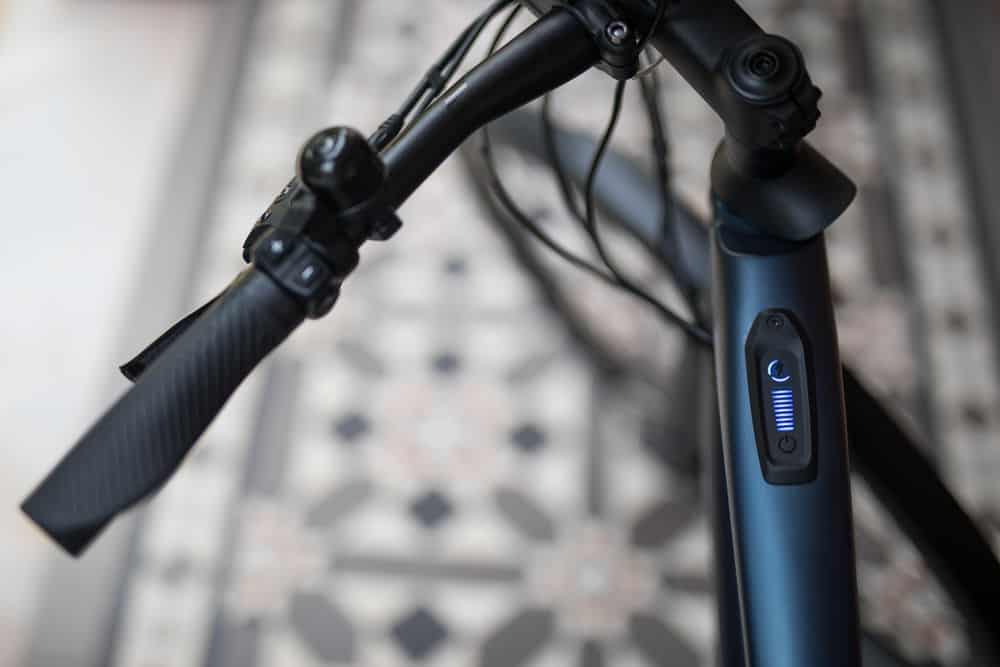
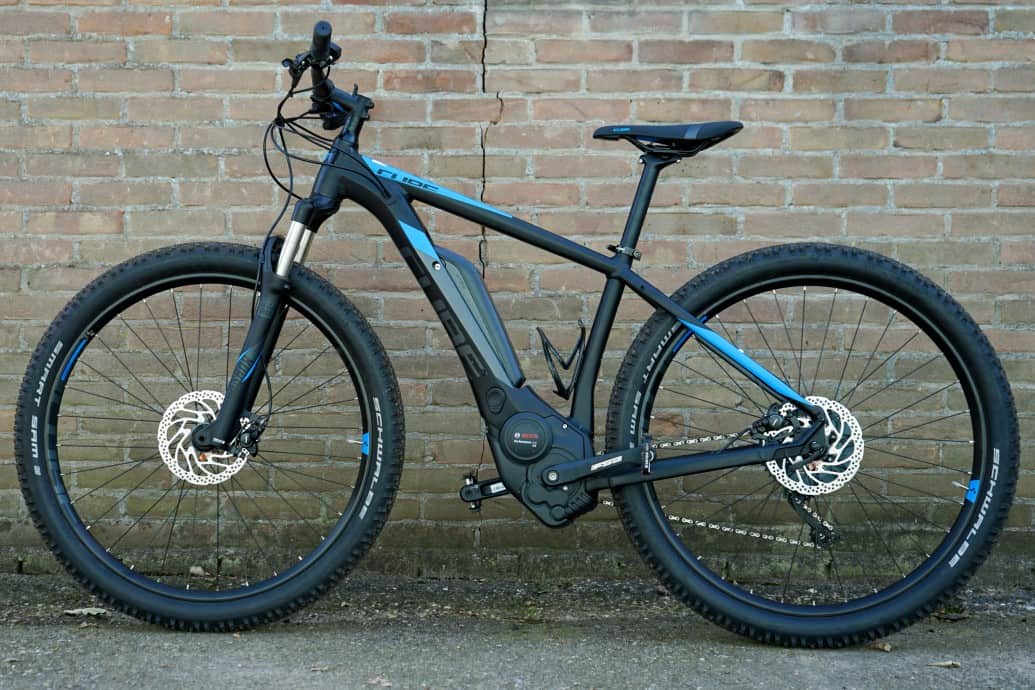
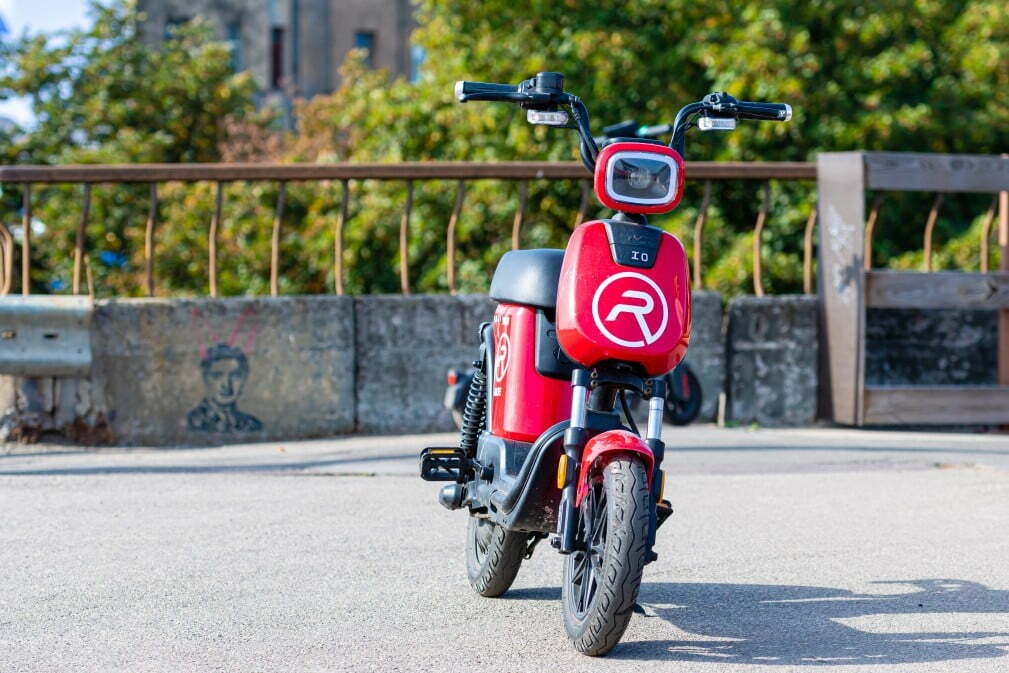
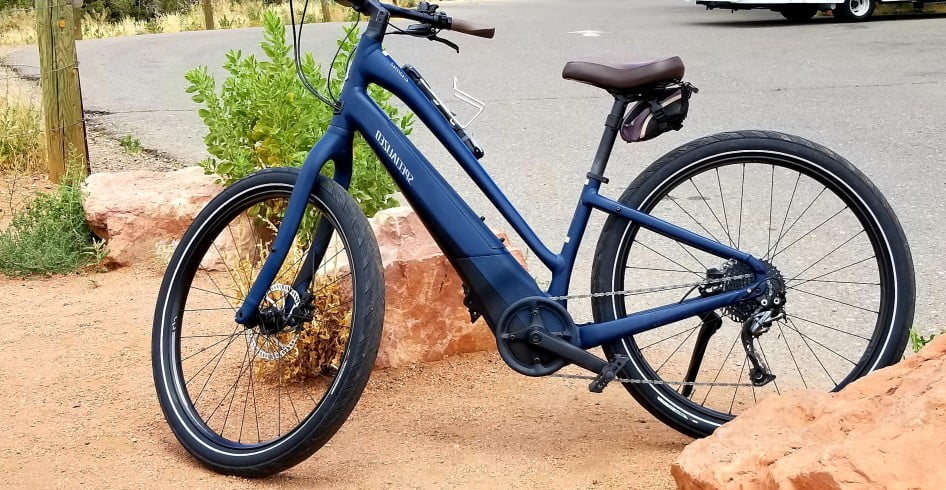
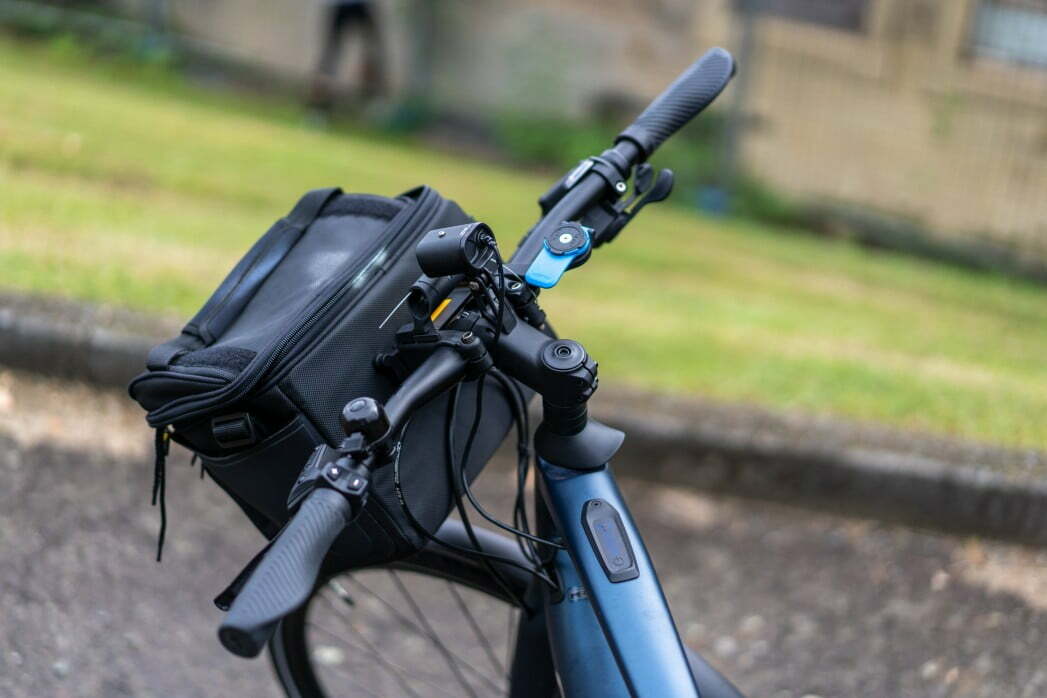
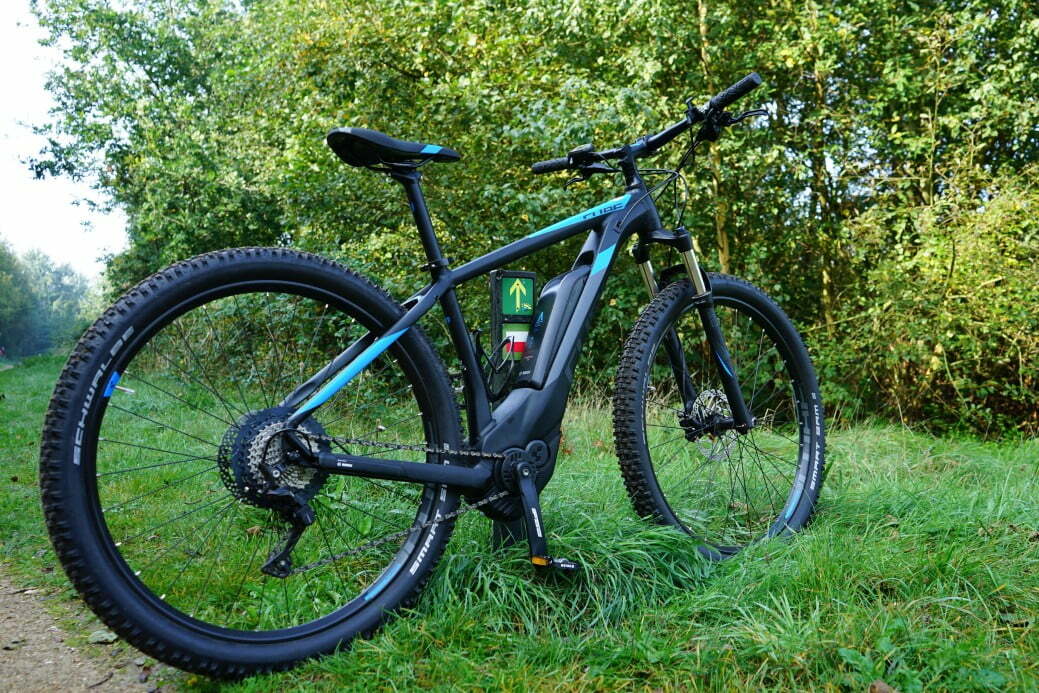

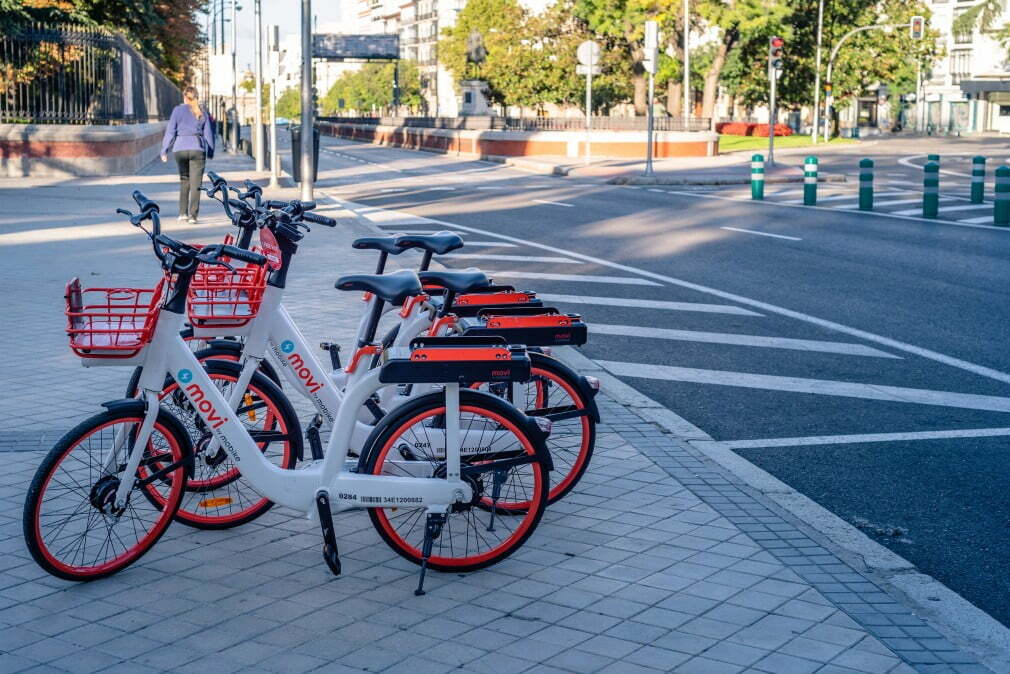

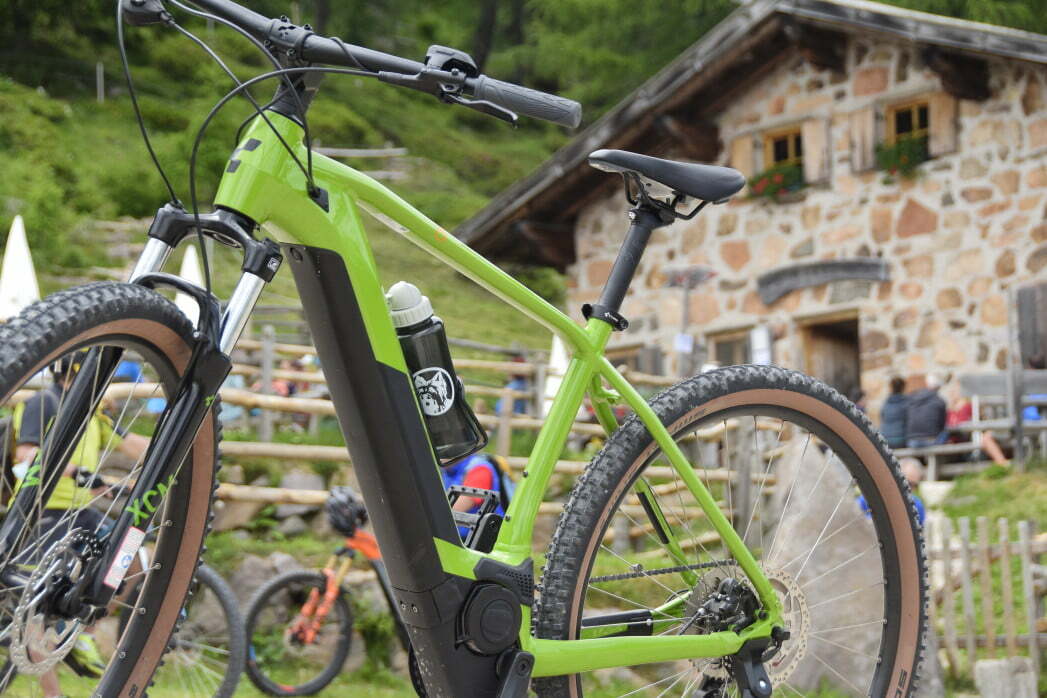
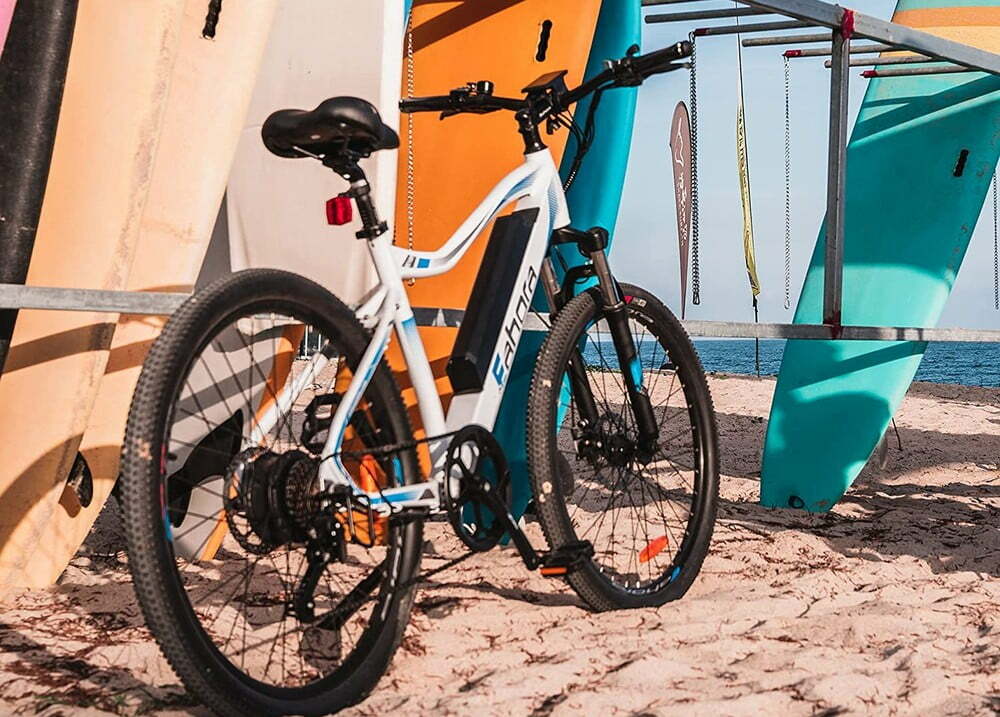
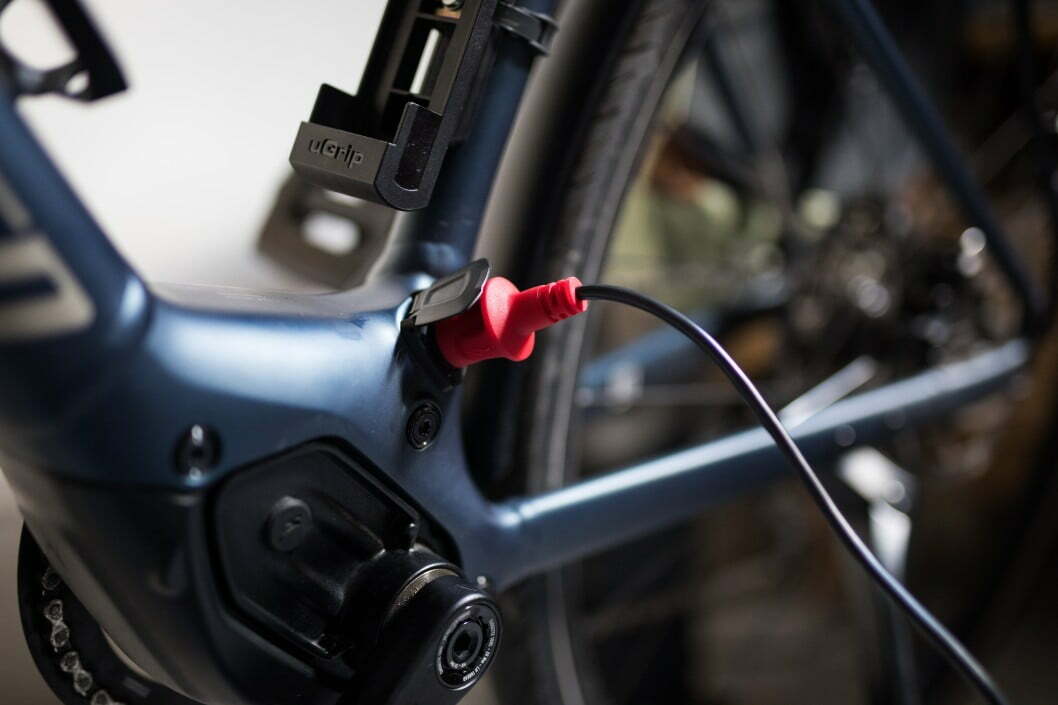
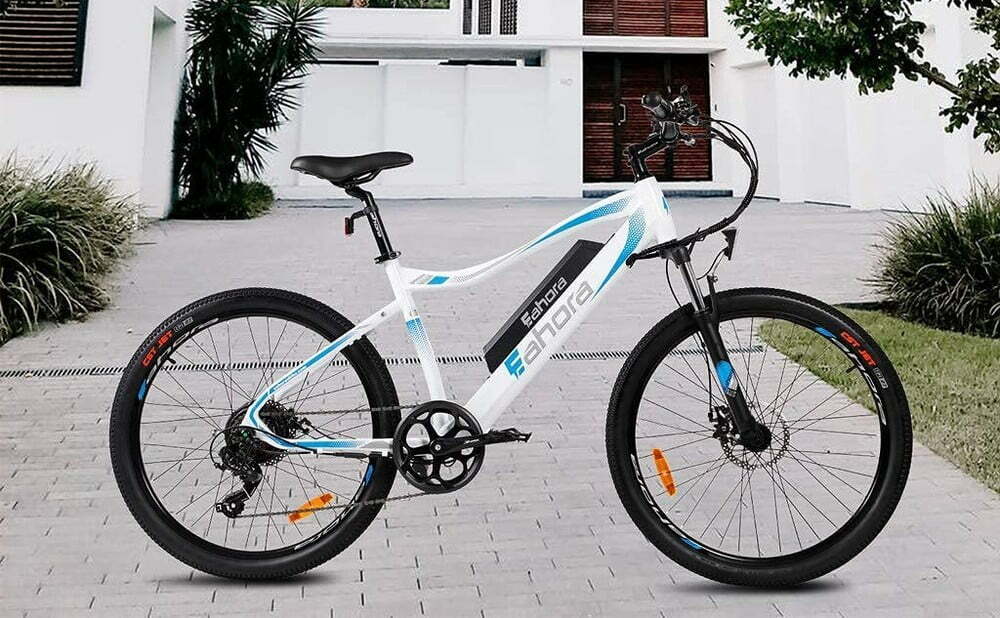


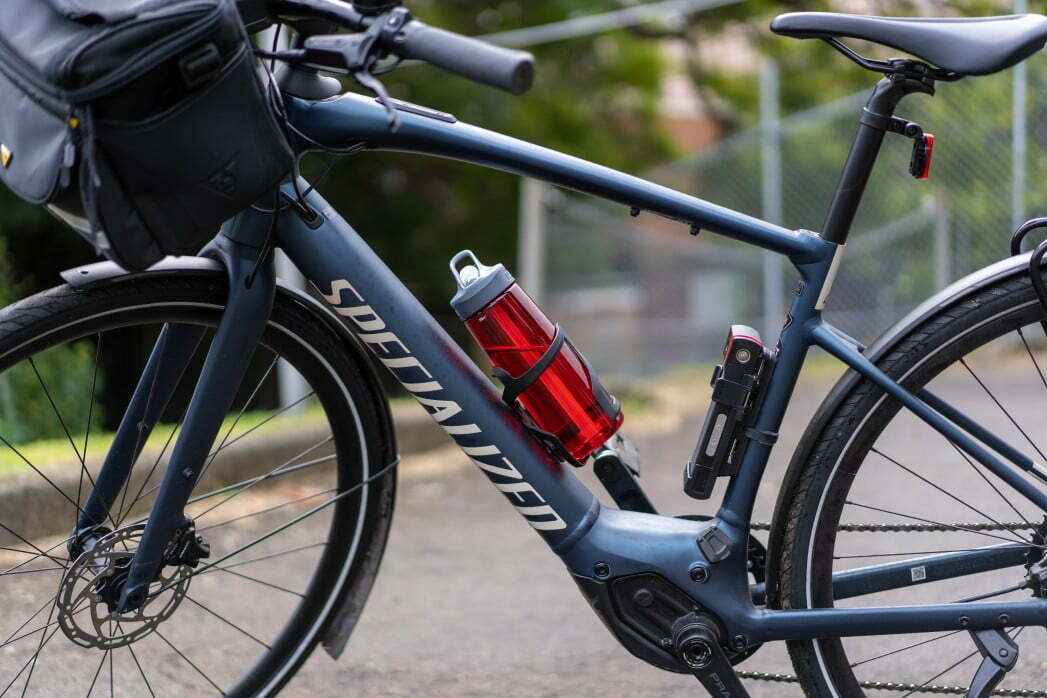
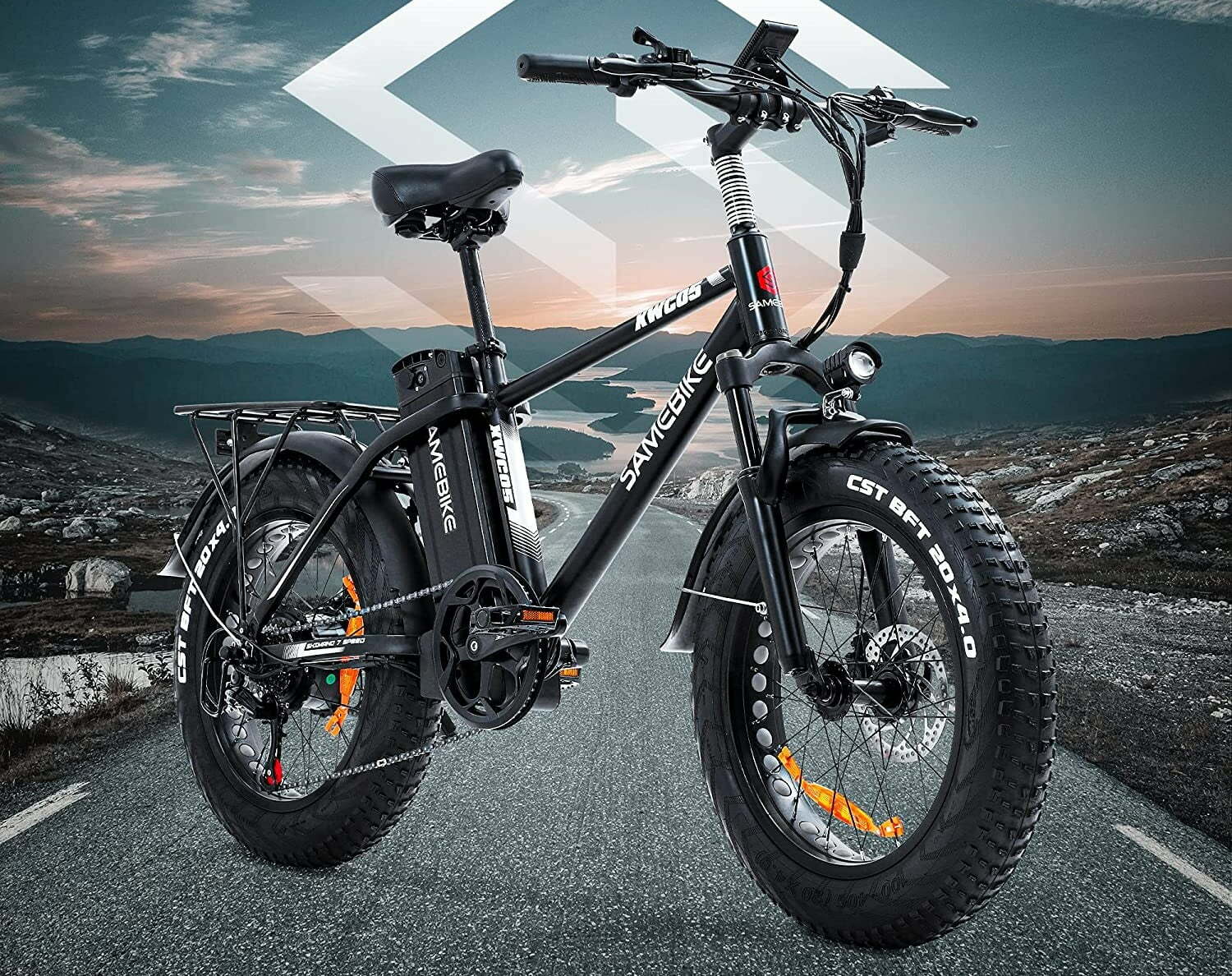
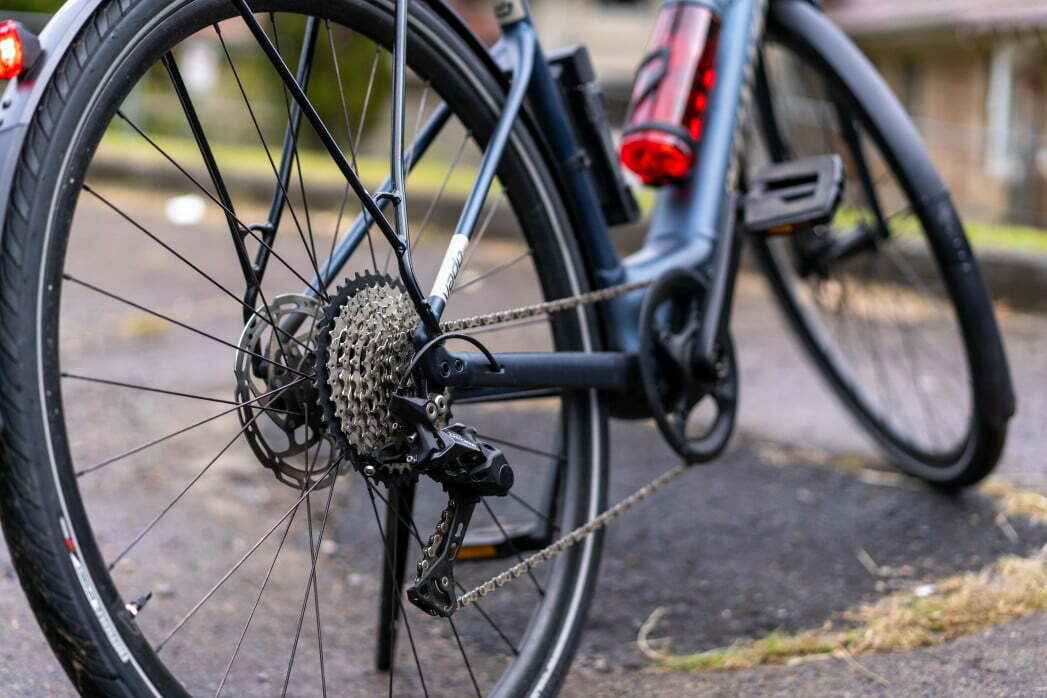
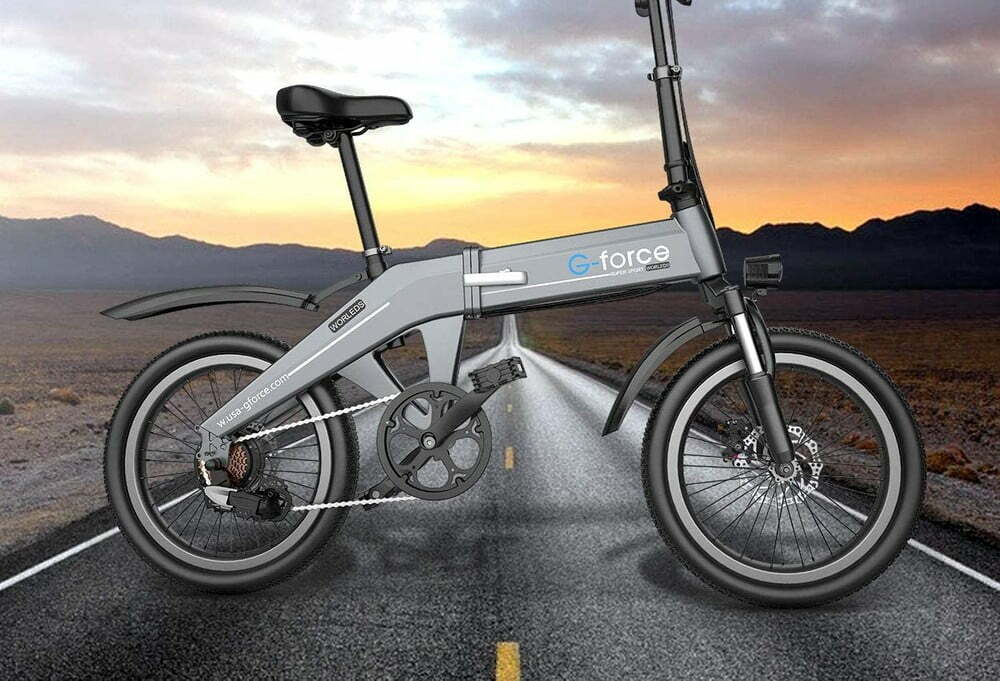
![Best Electric Bike in [year] ([month] Reviews) 29 Best Electric Bike in 2026 (January Reviews)](https://www.gadgetreview.dev/wp-content/uploads/elby-s9-750x422-1.png)
![Best Bikes in [year] ([month] Reviews) 30 Best Bikes in 2026 (January Reviews)](https://www.gadgetreview.dev/wp-content/uploads/cheapest-electric-bikes-1.jpg)
![Best Front Drive Electric Motor Bikes in [year] 31 Best Front Drive Electric Motor Bikes in 2026](https://www.gadgetreview.dev/wp-content/uploads/best-front-drive-electric-motor-bikes-image.jpg)
![Best Cannondale Electric Bikes in [year] 32 Best Cannondale Electric Bikes in 2026](https://www.gadgetreview.dev/wp-content/uploads/best-cannondale-electric-bikes-image.jpg)
![Best Luna Cycle Electric Bikes in [year] 33 Best Luna Cycle Electric Bikes in 2026](https://www.gadgetreview.dev/wp-content/uploads/Luna-Cycle-Apex-Electric-Bike.webp)
![Best Rad Power Electric Bikes in [year] 34 Best Rad Power Electric Bikes in 2026](https://www.gadgetreview.dev/wp-content/uploads/best-rad-power-electric-bikes-image.jpg)
![Best Rear Drive Motor Electric Bikes in [year] 35 Best Rear Drive Motor Electric Bikes in 2026](https://www.gadgetreview.dev/wp-content/uploads/best-rear-drive-motor-electric-bikes-image.jpg)
![Best Ebike Conversion Kits in [year] 36 Best Ebike Conversion Kits in 2026](https://www.gadgetreview.dev/wp-content/uploads/best-ebike-conversion-kit.jpg)
![Best Electric Bike Locks in [year] 37 Best Electric Bike Locks in 2026](https://www.gadgetreview.dev/wp-content/uploads/best-electric-bike-locks-image.jpg)
![Ebikes with Longest Range in [year] 38 Ebikes with Longest Range in 2026](https://www.gadgetreview.dev/wp-content/uploads/best-ebike-with-longest-range-image.jpg)
![Best Electric Bike Trailers in [year] 39 Best Electric Bike Trailers in 2026](https://www.gadgetreview.dev/wp-content/uploads/best-electric-bike-trailers-image.jpg)
![Best Bike Rack for Electric Bikes in [year] 40 Best Bike Rack for Electric Bikes in 2026](https://www.gadgetreview.dev/wp-content/uploads/best-bike-rack-for-electric-bikes-image.jpg)
![Best Electric Bike Helmets in [year] 41 Best Electric Bike Helmets in 2026](https://www.gadgetreview.dev/wp-content/uploads/best-electric-bike-helmets-image.jpg)
![Best Throttle Electric Bikes in [year] 42 Best Throttle Electric Bikes in 2026](https://www.gadgetreview.dev/wp-content/uploads/best-throttle-electric-bike-image.jpg)
![Lightest Electric Bikes in [year] 43 Lightest Electric Bikes in 2026](https://www.gadgetreview.dev/wp-content/uploads/lightest-electric-bike-image.jpg)
![Best Schwinn Electric Bikes in [year] 44 Best Schwinn Electric Bikes in 2026](https://www.gadgetreview.dev/wp-content/uploads/Electric-Bikes-image.jpg)
![Best All Terrain Electric Bikes in [year] 45 Best All Terrain Electric Bikes in 2026](https://www.gadgetreview.dev/wp-content/uploads/best-all-terrain-electric-bike-image.jpg)
![Best Cheapest Electric Bikes in [year] 46 Best Cheapest Electric Bikes in 2026](https://www.gadgetreview.dev/wp-content/uploads/cheapest-electric-bikes.jpg)

